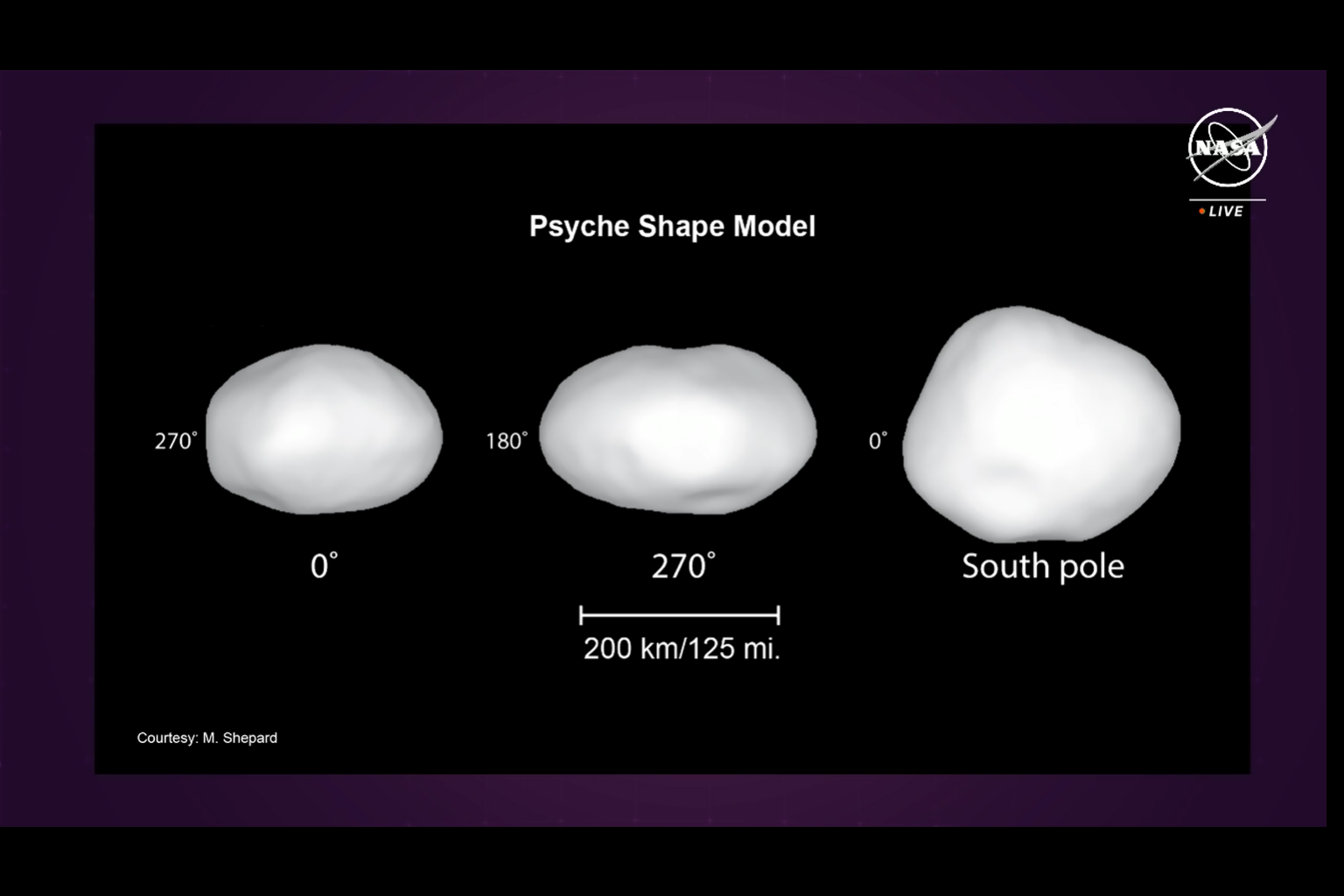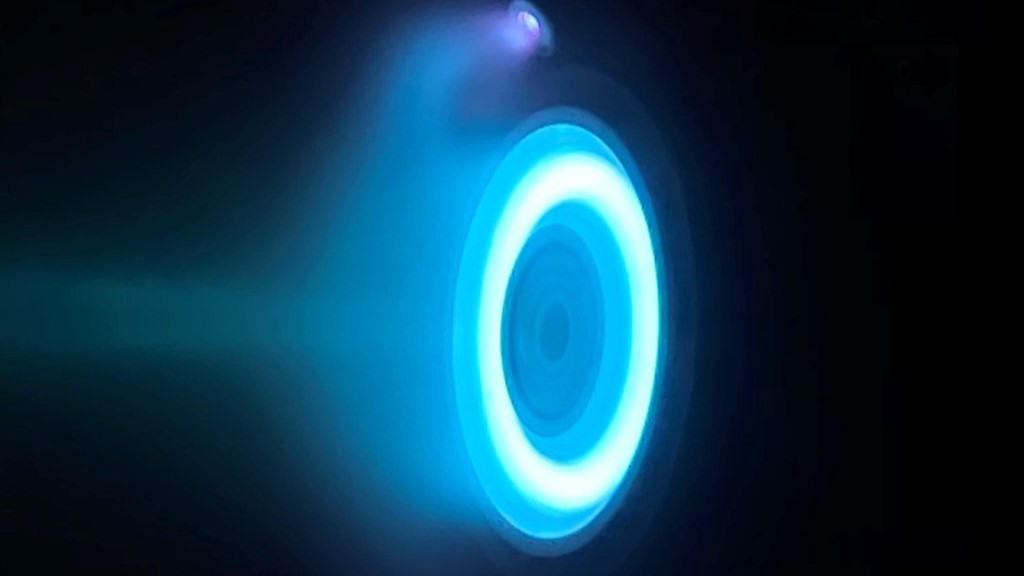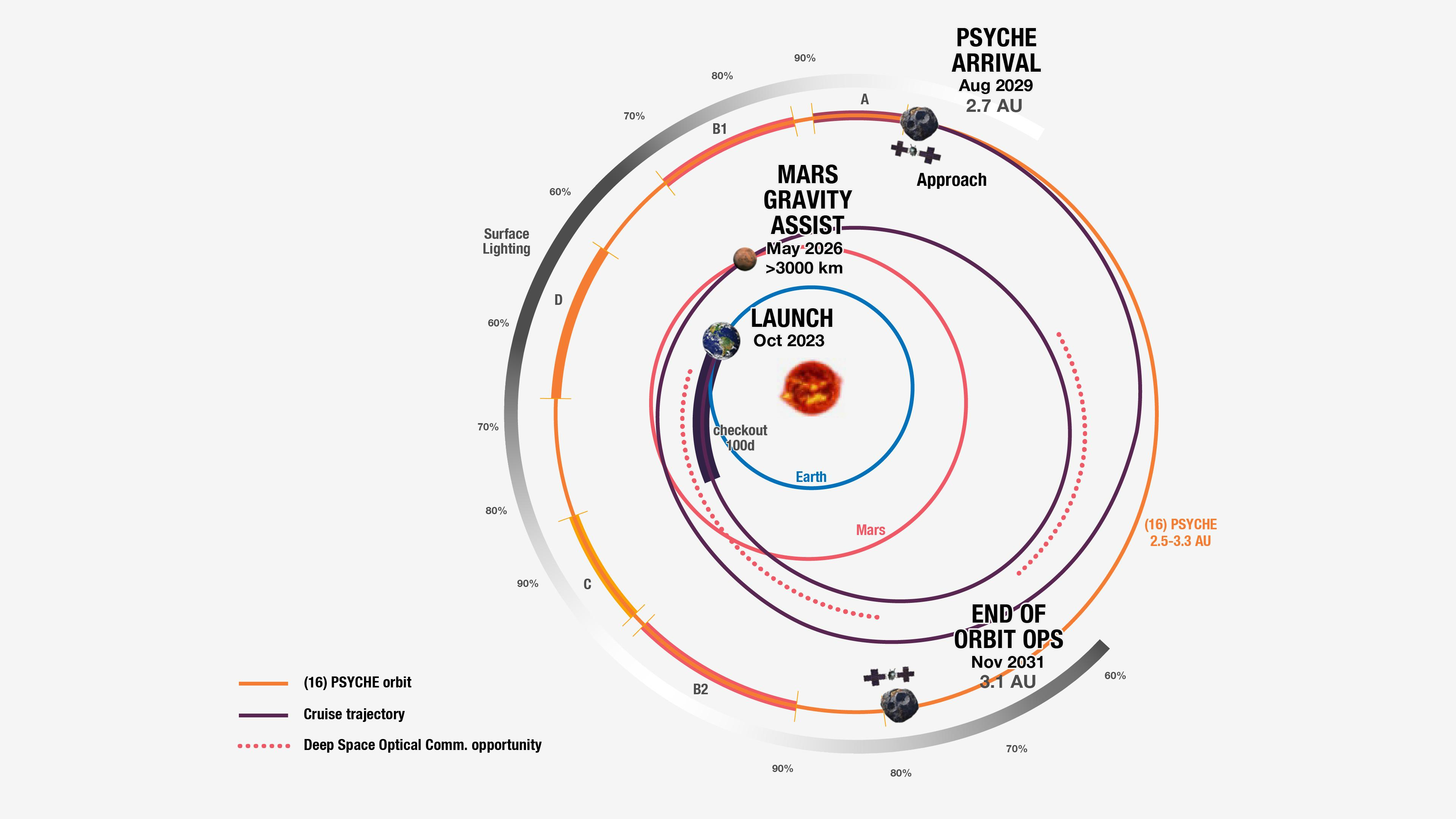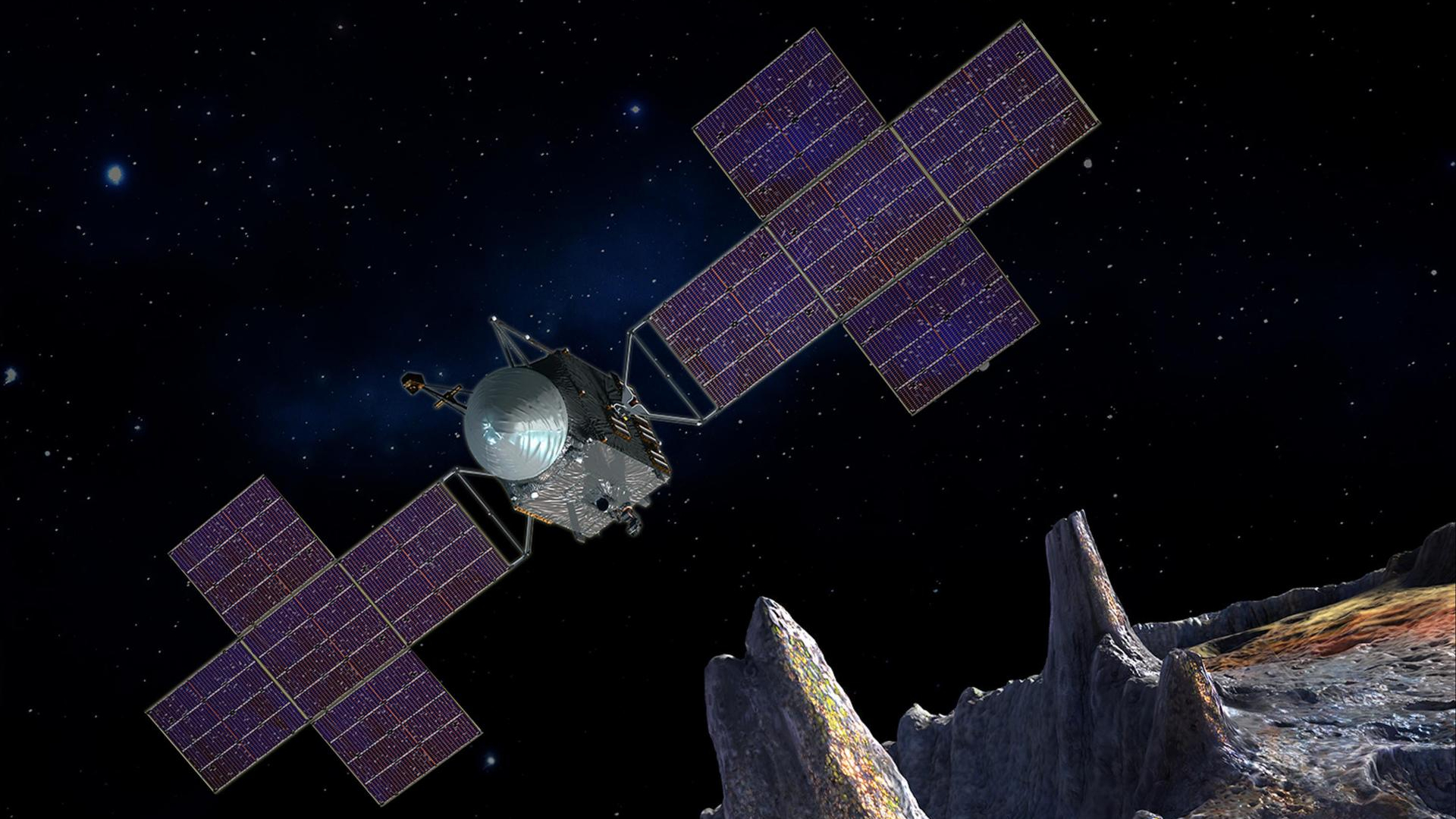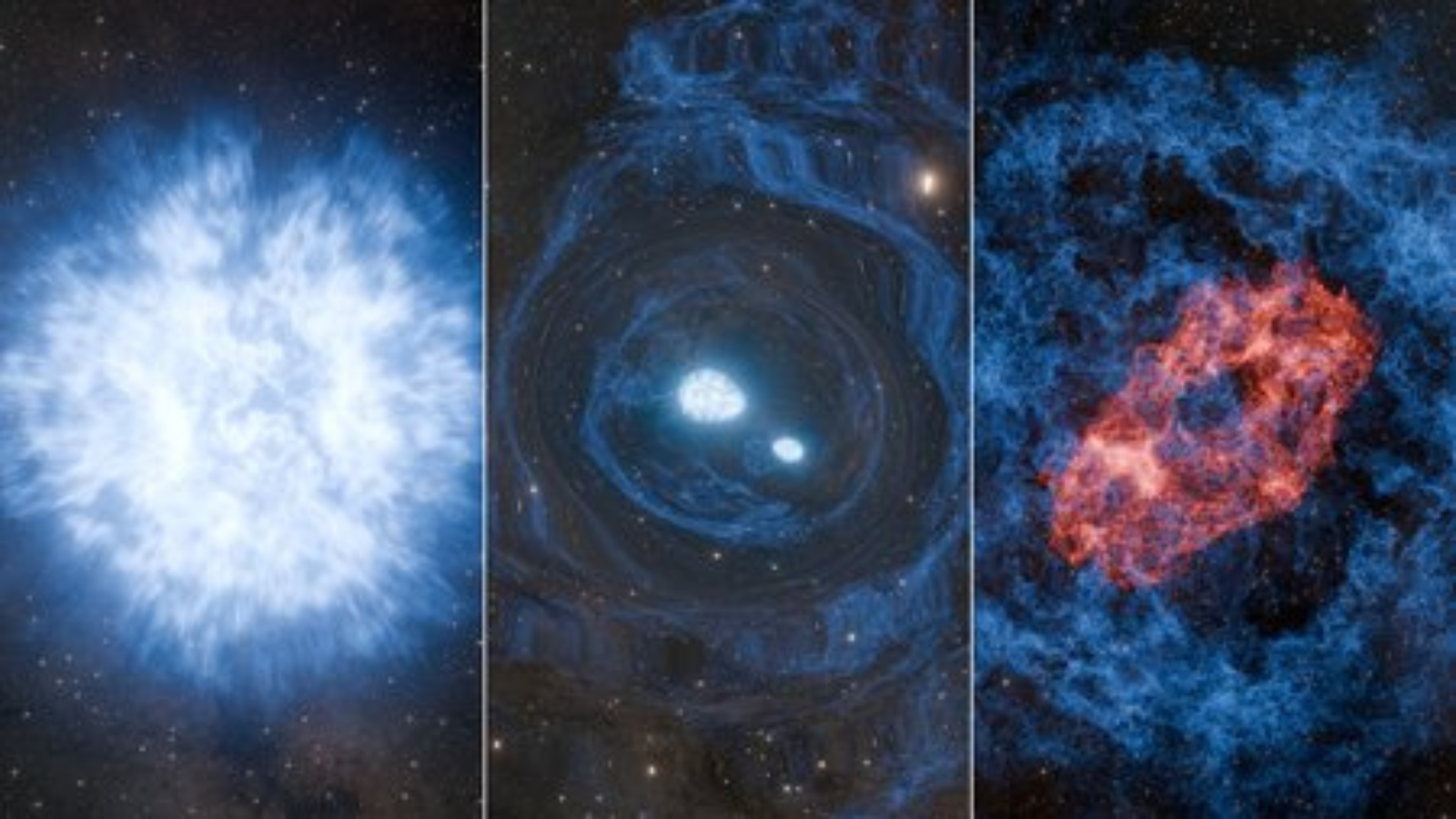NASA's Psyche metal asteroid mission will have a big impact on astronomy. Here's how
"Our basic scientific understanding is going to be updated, and that's why we need to go."

Five scientists gathered at NASA's Kennedy Space Center on Tuesday (Oct. 10) to lay out the blueprints of an exhilarating space mission set to launch in just a couple of days. It's called Psyche.
Named for its target, this endeavor will send a spacecraft on an impressive 2.2-billion-mile (3.5-billion-km) journey toward an asteroid dubbed 16 Psyche — but what's key here is that this asteroid is far more than a simple space rock. It may very well be the surviving metal core of a planet that had its outer layers stripped away long, long ago.
If the agency is right about that hypothesis, 16 Psyche has the potential to offer us a uniquely serendipitous way to study the core of planet Earth. This is because both are expected to have similar metallic compositions, possessing some combination of iron and nickel. But even if the team is wrong, and Psyche is actually some other type of cosmic object unlike the seed at our planet's center, there will still be cause for celebration.
As Lindy Elkins-Tanton, Psyche's principal investigator says, the second leading idea for what Psyche could be is equally as intriguing as the first — and one may actually argue it's even more tantalizing.
Possibly, 16 Psyche is made of material that formed really close to the sun at some point in time, then got "reduced" such that the material's oxygen atoms were disconnected from its iron atoms. In turn, the iron atoms would have become their metal form. "This is a kind of material that's been hypothesized by planetary scientists for a long time, but we haven't actually found any before," Elkins-Tanton said during the press briefing on Tuesday (Oct. 10). "So think about what this means when there's only one object like Psyche in the whole solar system."
"The other idea is that Psyche is a kind of primordial unmelted body, basically formed of the very first materials in the solar system that came together under gravity," Ben Weiss, deputy principal investigator of the Psyche mission, said during the briefing, "preserved in this primordial state ever since." In that case, we'd be looking at a stunning fossil of the ancient solar system.
Breaking space news, the latest updates on rocket launches, skywatching events and more!
Either way, this ambitious feat (presently scheduled to launch atop a SpaceX Falcon Heavy rocket on Oct. 12) is bound to end with us adding a few footnotes to our astronomy books. Already, in fact, Psyche has marked quite a few milestones.
Sci-fi propulsion is now a reality
David Oh, chief engineer for operations at NASA's Jet Propulsion Laboratory says this will be the first-ever mission to use Hall Effect thrusters in interplanetary space. What does that mean? Well basically, Hall Effect thrusters use electricity to ionize xenon gas — ionization refers to removing or adding one or two electrons from the atoms that make up a substance. In this case, the substance is a gas.
Upon ionization, those atoms gain a charge. (Regular old atoms have neutral charges because their positive proton count and negative electron count are equal. Remove some electrons, for instance, and you lose some negativity.) The result? Ions. Then, those charged ions form an electric field which can, through a series of complicated steps, propel an object. In this case, that's the Psyche spacecraft.
"They come out of the thruster going at 15 kilometers per second, or nine miles per second," Oh said. "That's five times faster than the speed of the fuel coming out of a regular chemical rocket."
"30 years ago when I was a graduate student, I worked on Hall Effect thrusters," he continued. "At the time, it was considered an esoteric and experimental technology of the future; it was the kind of thing that you heard about in Star Wars and Star Trek."
Now, here we are.
Tapping into this technology, the Psyche spacecraft is slated to reach its metallic target in 2029 after launching on Thursday. This does sound like a long while, but the road to getting there is so utterly complex that NASA doesn't doubt time is going to fly. "Launch is just the start," Oh said.
The route
After lifting off from our planet and separating from its Falcon Heavy rocket chariot, Psyche will begin moving toward its subject situated between Mars and Jupiter. Then, the Hall Effect thrusters come in.
"These thrusters can operate over long periods of time; days; weeks; months," Oh said. "and this small force on the spacecraft accumulated over all that time accelerates it to the high speeds we need to be able to navigate to Mars."
Once the spacecraft reaches the vicinity of Mars, it will dip into the Red Planet's gravitational influence in order to be propelled like a slingshot toward Psyche itself. This is called a gravity assist, or as Oh puts it, a bit of "cosmic trickery."
"Then we'll restart our ion propulsion system," he said, "and use that to make the rest of our journey to Psyche."
Having reached its destination, the spacecraft will start getting into its optical navigation systems, taking pictures to help it make its way to the highest of four planned orbits around the asteroid. At this stage, lots of data will be collected about the space rock such as what its gravity field looks like by way of the team's "gravity science experiment."
Slowly but surely, Psyche will then descend into closer orbits and ultimately approach its namesake.
The arrival
The Psyche craft is armed with a bunch of measurement tools such as a gamma-ray neutron spectrometer that can investigate what kind of elements make up the asteroid and two magnetometers to understand the object's magnetic field.
"Psyche today is long frozen, but if it formed as a metallic core in the early solar system, it was once a molten body and has been cooling really quickly and potentially generating a magnetic field." Weiss said. "That magnetic field could be imprinted in the outer layers of Psyche's cold exterior as a kind of echo or fossil that we could then detect today."
There's also a multispectral imager that can capture light wavelengths across the spectrum — and the gravity science experiment's scope actually also reaches into this stage. It can help scientists understand features of the asteroid such as its precise density. And as Weiss explains, this experiment quite interestingly harnesses the spacecraft's antenna, which is typically used for communication.
"It turns out you can also use this to determine the gravity field," he said, invoking the example of a train zipping by. "When it comes towards you, it's got a higher pitch. When it passes you, it's got a lower pitch. We can look at the pitch or frequency of the radio waves coming from the antenna, and figure out how fast the spacecraft is moving. We can track its disk speed as a function of its position around the asteroid — and from that we can see how lumpy the gravity field is."
In other words, if the spacecraft seems to be moving faster, it's probably going to be above a dense region. If it's moving slower, it's probably going to be above a less dense region. And so on.
Finally, on the note of communication, Abi Biswas, a technologist at NASA's Jet Propulsion Laboratory, explained that the spacecraft will be transmitting all that awesome data back to our planet through a state-of-the-art Deep Space Optical Communications project.
DSOC, in a nutshell, uses lasers to exhibit a 10 times higher data transmission rate from Mars distances when compared to regular radio frequency transmitters. "Future NASA missions, in particular those involving human exploration of Mars," Biswas said during the briefing, "demand much higher data return rates — and that's the motivation for this technology demonstration."
On Earth, there's a 1-meter (3 foot) telescope at Table Mountain Observatory in California that transmits a laser beam up to the spacecraft. Then, the spacecraft is able to detect the beam and track it. Once it can start tracking that laser beam, it knows where to point its own laser beam. Then, it sends a downlink beam to a receiver at the 200-inch (5 meter) Hale telescope at Palomar Observatory (which is also in California.)
"Both these laser beams are modulated which means they're flashing on and off," Biswas continued, "those flashes are timed, and the timing of those flashes is what encodes the information that's carried over these laser beams."
The open questions
"There aren't that many completely unexplored types of worlds in our solar system for us to go see," Elkins-Tanton said. "We visited, either in person or robotically, worlds made of rock and worlds made of ice and worlds made of gas … but this will be our first time visiting a world that has a metal surface."
Some questions that arise in this regard are: What would a crater on a metal asteroid look like? Perhaps, the team says, an impact on Psyche would spur the existence of tiny little spikes on the object rather than create a plume of debris like an impact on a rocky surface would. Another question is: Might there be huge cliffs or evidence of lava flows on an object like this one?
Per Elkins-Tanton, experts believe that there were likely sulfur-rich eruptions from volcanoes on the asteroid when it was very young. What might that have led to? Weiss suggests the multispectral imager will be key in decoding the aftermath of such eruptions.
"One of the things that we on the team, and in fact the whole scientific community, have been asking ourselves now for a long time," Elkins-Tanton also pointed out, "is what do we think it's going to look like?"
We do know some things about Psyche already, such as the fact its surface area is about the same as the area of California and it's sort of lumpy-shaped, for instance, but we won't actually have an idea about its true visage until the space explorer gets there. "We're going to find out that our basic scientific understanding is going to be updated, and that's why we need to go," she said.
"I just want to give my thanks to the entire team. They've come through some tough times and really have done an amazing job on this mission," Lori Glaze, director of NASA's Planetary Science Division said.
"We know we're ready and cannot wait to get launched later this week."

Monisha Ravisetti is Space.com's Astronomy Editor. She covers black holes, star explosions, gravitational waves, exoplanet discoveries and other enigmas hidden across the fabric of space and time. Previously, she was a science writer at CNET, and before that, reported for The Academic Times. Prior to becoming a writer, she was an immunology researcher at Weill Cornell Medical Center in New York. She graduated from New York University in 2018 with a B.A. in philosophy, physics and chemistry. She spends too much time playing online chess. Her favorite planet is Earth.
